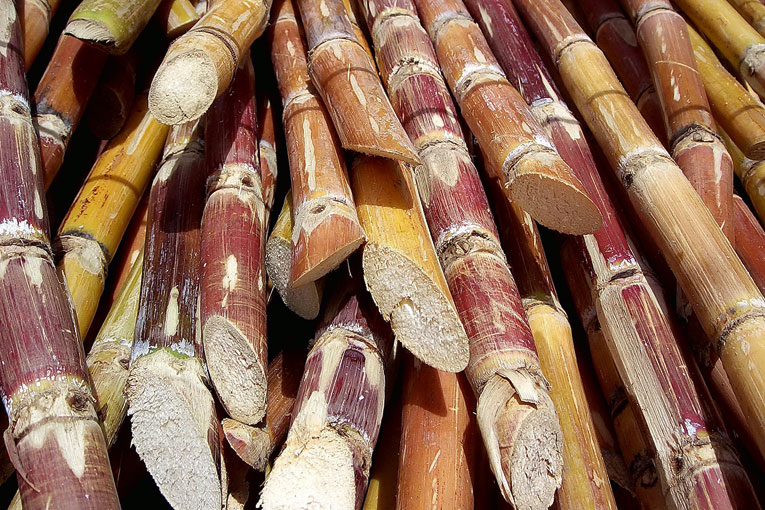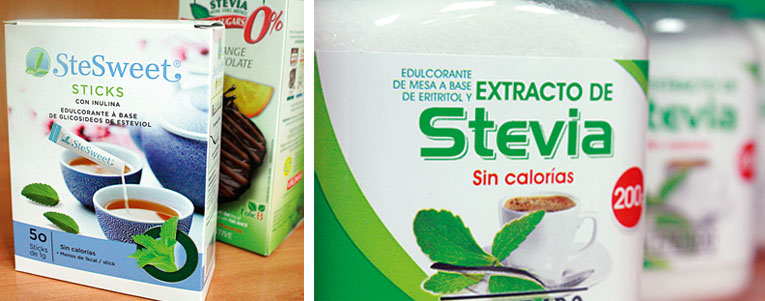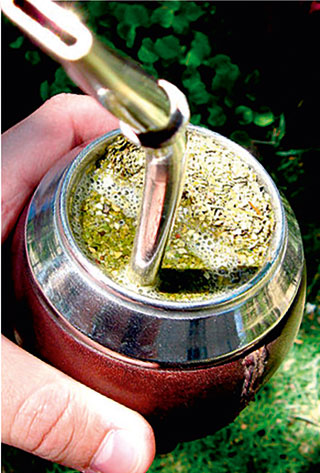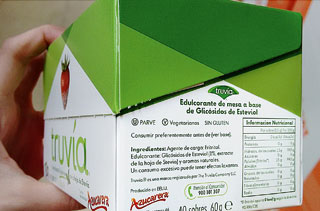
Sweet is more than a flavour. It is a world of nuances and aromas, a range of sensations and experiences linked to the pleasures of the table. «Sweeter than honey», that is what the poets sang in passionate verses, knowing that there was no better delight than sweetness on your lips.
Since the Late Middle Ages sugarcane – and later sugar beet – has been the ultimate sweetener in sweets and desserts, and also a very effective food preservative. White or brown, tabletop sugar would sweeten the palates of all five continents.
At the end of the nineteenth century the emergence of artificial sweeteners – saccharin and later ones – opened a new stage for the food industry. And for the pharmaceutical industry, too. There was no need for carbohydrates to taste sweet. People with a really sweet tooth could taste it. It did not matter if they were diabetic or were on a diet to lose weight, plus drugs did not need to be bitter. However, there were also a series of open disputes – both among experts and the public sphere – with respect to long-term danger derived from artificial additives, whose obtaining – chemically – gave rise to some distrust.
At the beginning of the twenty-first century, stevia, from Paraguay, broke into our daily lives and we can now find it in restaurants, supermarkets and even pharmacies. The secret is plain simple: it is a natural sweetener that adds no calories to the diet. The sweet panacea?

Since the Late Middle Ages the sugar from sugarcane – and later, from sugar beet – has been the ultimate sweetener in sweets and desserts, and also a very effective food preservative. / Rufino Uribe
Natural sweeteners
The difficulties to access the East favoured the development of the sugarcane industry in the Muslim kingdom of Granada, Sicily and the Valencia Region during the Late Middle Age. Genoese merchants were the main stimulators of this production and the commercial circuits activation. Later, governments encouraged sugarcane plantations and the sugar industry, and Valencian lords built their trapiches (“sugar mills”) and forced the country people to plant the canes. The family workshop soon turned into a great industrial company with a large workforce and strong capital investment that led to the birth of trading companies (Gisbert, 2000).
When translations of original medicine works came to Western Europe, a number of pharmaceutical formulas and techniques were put into practice. Sugar, advised in dietetics, was vital in the composition of a long list of drugs, both as an excipient, a sweetener and a preservative (Ouerfelli, 2008).
Via the field of medicine, sugar would eventually be included in nutrition. As a result of fashion, luxury and exoticism, elites fell for this flavour, which ended up being an essential element in their feasts. Culinary recipes, food stories, menus, chronicles and journey recipes show a spectacular growth of sugar devotion. Apothecaries, spice-traders and confectioners did not sit on the fence before the spread of its consumption and strong demand. Thus, the sucrers (sugar-producing workers) became real craftsmen in Valencia, with a professional association in the sixteenth century.
In those modern times, sugar has long since stopped being exotic. Nevertheless, the contact with America brought the arrival of a group of plants that changed pharmacopoeia and food habits radically. Valencia played an unquestionable role.

The Genoese merchants stimulated sugar production in Valencia, followed by the governments that encouraged sugarcane plantations. Valencian lords built sugar mills and forced the country people to plant the canes. In this image we can see one of those traditional sugar mills or trapiches. / Xandu
Pere Jaume Esteve and the ‘Stevia’ species
Pere Jaume Esteve (c. 1500-1556) was a herb professor in the General Study of Valencia, dedicated to the teaching of simple medicines, mostly from the vegetable world. Esteve had studied in Montpellier and Paris, which then the nerve centres of European medicine at the moment. He mastered Latin and Greek, and had a robust background in anatomy and mathematics. Resolutely in favour of Galen’s humanism, he argued that the works of the classical authors should be read from the originals – especially Hippocrates and Galen –, not from the Arabic versions. Therefore their translations into Latin of Nicander’s Theriac and Hippocrates’s Epidemics contain, along with reviews, the original texts in Greek. His successors in the professor chair, Juan Plaza and Jaime H. Pomar, increased the prestige that the Medical Faculty and the General Study of Valencia already had throughout Europe (López Piñero, 2006).
Esteve wrote a book about the plants of Valencia and its surroundings. It was never published but had a wide circulation as a manuscript. Unfortunately, only the summary that Gaspar Escolano includes in his Décadas de la historia de Valencia (Decades of the History of Valencia, 1610-1611) remains, which is an extensive and documented chronicle of the city and the region of Valencia.
Two centuries later, the Valencian botanist José Cavanilles (1745-1804) – director of the Royal Botanical Garden of Madrid and fierce advocate of Linnaeus’s taxonomy – named Stevia a type of American plant that had arrived to the court thanks to the scientific harvests of Martín Sessé during the Royal Botanical Expedition to New Spain. He explored the territories of current Mexico and the Pacific coast from California to Canada (Bleichmar, 2012). This way he honoured Pedro Jaime Esteve and, through him, the General Study of Valencia. Fully aware of the Valencian tradition of medicinal plant studies and convinced of the need to have a consistent botanical genealogy, Cavanilles repeatedly used the names of the herbs professors from the General Study to designate new types of plants, as you can check in his Icones et descriptiones plantarum (Madrid, 1791-1801) (López Piñero, 2004).
So here we have an eponym that names a sweetener that is increasingly more frequent in our supermarket shelves. A food additive that is gaining ground in North American and European supermarkets, even though its consumption is restricted by law.
Stevia in Paraguay
The stevia plant (Stevia rebaudiana Bertoni) is a plant species from Paraguay, where you still can find it in wild bushes. Since ancient times, Guarani people have known this plant as ka’a he’ẽ, “sweet herb”. It does not usually reach one meter in height, with serrated and opposite leaves and a bright green colour. The stems are herbaceous and the plant sprouts thanks to its strong roots. In 1899, the Swiss botanist Moisés Bertoni (1857-1929) identified and described it.
It is a traditional ingredient in the Paraguayan diet. The herbalists sell it in the markets and the families cultivate it at home, in gardens and terraces. They use its leaves to sweeten teas, which are very popular. In addition, everybody drinks mate in winter, in summer it is very common to add stevia leaves to the tereré, a refreshing drink prepared with herbs, water and ice, ideal for any moment. On the other hand, its stems are useful as fodder to feed the cattle. In addition, in Paraguay stevia is appreciated not only as a sweetener, but also because, in traditional medicine, it is considered to be beneficial for health.
The quality of native stevia and the increase in its consumption around the world have encouraged a lot of multinational companies lately – drawn by the profits expectations – to set up in some areas of Paraguay to cultivate stevia intensively and exploit it industrially. Nowadays, in order to satisfy external demand, thousands of hectares are dedicated to its intensive cultivation. Despite Paraguay’s efforts to get their own designation of origin, the neighbouring countries – Argentina, Bolivia and Brazil – have joined the stevia boom. Its large-scale production and consumption are spreading across South America.
Stevia acclimatization in the Mediterranean basin
Currently, work is being done on a worldwide initiative to acclimatize the stevia cultivation to the Mediterranean basin (Sharma, Walia, Singh, & Kumar, 2015). After different tests carried out in Valencian territories, the result has been a strong plant, above all, resistant to all kinds of diseases, in such a way that it does not need much agricultural attention. Furthermore, production costs are quite reasonable, ensuring its profitability.
Its cultivation – being a seasonal type –, requires sun and heat and also water, even though it does not need to be quality water. In addition, the stems can be used to feed the cattle. In this regard, the «guirra» recovery (the autochthonous sheep of Valencia) when stevia is added to its diet as a supplement is currently under study.
After the annual harvest, which takes place in September, the roots regenerate the whole plant the following spring. On the other hand, stevia as a natural fertilizer regenerates the soil because it fixes nitrogen. Besides, it is easy to reproduce by cutting, a technique that requires minimal investment and facilitates its spread.
In short, stevia cultivation can be a real alternative to other types of plantations and moreover it is considered sustainable and environment-friendly. However, not everything in the garden is rosy, especially with regard to the introduction of a new product in the market. At the moment only the stevia extract – which is the only presentation supported by European legislation (see below) – has passed all the sanitary controls to ensure safety. It is a long and tortuous process interests of different sectors of the food industry are not unfamiliar with.

Stevia was a traditional ingredient in Paraguayan diet. Leaves are usually used to sweeten tea, a very popular drink in the country, especially the mate herb during winter and tereré during summer. / Anna Mateu
The sweeteners war
Since the end of the nineteenth century several sweeteners – sugar substitutes – have entered the food market. At the same time, beet sugar obtained a special economic prominence in Europe. Many controversies arose in connection with the regulation of sweeteners. Saccharin was central in the first of them.
Saccharin was described and patented at the end of 1870 and ten years later it was already the source of an intense dispute about its nutritional safety and value. In Europe, the beet sugar industry was the main driver of this controversy and they managed to ban saccharin in most of the states. At the time, even an extraordinary international convention was held (only comparable to the one about opium regulation) to agree on a prohibition that exceeded the limits of the state.
The battle about its regulation was not fought with explicit economic arguments, but rather with the constant reference to sanitary arguments that – back then – were not strong enough (Vallverdú i Segura, 2005). The trade battle was also fraudulently concealed beneath controversies, which from the second half of the twentieth century gave rise to cyclamates, saccharin (again), aspartame and sugar itself. The economic, social and political significance of sweeteners has seen a constant increase in recent years. This fact cannot be disconnected from the difficulties that stevia had gone through to enter the sweeteners market.
The industrial production of stevia
Currently, the industry produces thousands of tonnes of stevia extract to deal with the huge market demand, which is impulsed by its consumption that has been on the rise in the last decade, given an annual growth higher than 500%. Subject to the regulations of each country, companies invest large amounts of money in the production, preparation and marketing of stevia, and they use its natural origin and green colour as a commercial strategy for a supposedly healthy product.
The industrial processing of stevia entails collecting, drying and extracting the soluble part of the plant using alcohol and hot water and consecutive filtrations and precipitations. The resulting product is purified at the laboratory through ion-exchange techniques and, finally, a whitish powder with a high proportion of active sweetener ingredients is achieved: the steviol glycosides, chemicals with the particularity that they do not metabolize in the digestive tract and they do not rise the glucose proportion in blood. Therefore, they are suitable for consumption in low-calorie diets and for people with diabetes (Shivanna, Naika, Khanum, & Kaul, 2013).
Many techniques to obtain stevia extract have been patented, that is, many physicochemical methods to extract and purify it. Different varieties of the plant have also been patented, which usually produce infertile seeds. Depending on the processing method, but also according to the plant quality and cultivation conditions (earth and weather), products with more or less purity or steviol glycosides, responsible for stevia’s sweetening power, are obtained. In any case, the degree of purity is never higher than 98%.
Despite the prestige of stevia in Paraguay, currently, the largest world producer is China. China exports to the whole world. However, the Chinese extract is no match for those from South America. Sometimes, they get to the market mixed with other sweeteners to improve their flavour.
Large-scale marketing and consumption of stevia
Stevia consumption is strongly conditioned by the legislation framework of each country. The first global consumer is undoubtedly Japan, among other reasons because the law strictly limits the use of artificial sweeteners. According to European regulations adopted in 2011, stevia marketing is restricted to the sale of steviol glycosides as food additives, either in powder or liquid form. You can identify it on the labels with the code E-960. Many industrial foods are sweetened with steviol, from canned drinks (soft drinks) and desserts (cakes) to dairy products (yogurts) and sweets (chocolate, jams). There are juices and sauces containing the stevia extract instead of sugar or artificial sweeteners like saccharin or aspartame. Stevia is also used for toothpastes, especially children’s.
In practice, the usual stevia on sale in supermarkets is a tabletop sweetener that contains a small amount of steviol glycosides – less than 5% – and it is often mixed with other sweeteners, especially with those called polyols or sugar alcohols, such as erythritol, maltitol or sorbitol. These are products «with stevia», although they often use green colour on a white background with the Stevia brand to attract the customers’s attention. On the other hand, some herbalist’s sell the dry leaf to the clients that expressly ask for it in a framework that could be qualified as alegal.
Germany, followed by France, is the pioneering country in Europe in the consumption of stevia-sweetened products. In other European countries it is starting to be known as a tabletop sweetener. There are diet companies that have replaced the artificial sweeteners that they used to add to their products with stevia extract.
Stevia and legislatioN
The agencies responsible for the quality of food assume as a basis the principle of precaution towards the products we consume. Since we are talking about millions and millions of consumers, the authorisation of a substance that is supposed to enter the food chain must be subject to strict rules and strong control to avoid the risks of harmful effects. In addition, consumers must be fully informed – through proper labelling – of possible adverse or unwanted reactions that a certain ingredient may cause in their bodies. Therefore, it is important that the recommended maximum daily dose that somebody can consume – depending on the weight and the age – is included on the labels. In the stevia case, the allowable daily maximum ingestion is 4mg/kg of body mass.
In 2011, the European Food Safety Authority (EFSA), which is the European agency that works to ensure, among other things, the safety of the food we eat, only authorised steviol glycosides as food additives (E-960) and set, in accordance with the different food categories, the conditions to use it in the framework of the Regulation 1161/2011 of the European Union. In this law, not the leaves nor other parts of the plant are mentioned at all, as the Spanish Agency for Consumer Affairs, Food Safety and Nutrition reminded in its March 2015 memo about the situation of stevia as a food ingredient: «Unless there is a change in the status of Stevia rebaudiana Bertoni and its leaves or it gets the authorisation as a novel food, Spain will follow the criteria agreed in the European Union and will not allow the placing of Stevia rebaudiana Bertoni on the national market to be consumed as food, regardless of the more flexible policies that some member states might be adopting in connection with this issue.» (AECOSAN, 2015).
Previously, in 2006, the World Health Organization had declared that adverse effects were not found in stevia, and two years later the FDA (Found and Drug Administration) – the US Agency that controls foods and drugs – authorised the marketing of steviol glycosides, although they warned that these products are not stevia themselves, but very purified extracts. On the other hand, nowadays the potential therapeutic applications of stevia are being considered, although it has to be said that now – despite the expectations raised – there are no conclusive results (Puri, Sharma, & Tiwari, 2011).
The interdisciplinary group «Stevia, naturalment» is composed by Carmel Ferragud (López Piñero Institute for the History of Medicine and Science, University of Valencia), Jaime Güemes (Botanical Garden of the University of Valencia), Ximo Guillem (López Piñero Institute for the History of Medicine and Science, University of Valencia), María Luz López Terrada (Ingenio, CSIC-UPV, Polytechnic University of Valencia), Xavier Martínez Monzó (Polytechnic University of Valencia), Àlvar Martínez Vidal (López Piñero Institute for the History of Medicine and Science, University of Valencia) and Gloria Ruiz Díaz (JUNEMEL Alimentaria S.A.).
References
AECOSAN. (2015). Situación del uso de Stevia rebaudiana Bertoni como ingrediente alimentario. Retrieved from the website of the Spanish Agency for Consumer Affairs, Food Safety and Nutrition: http://www.aecosan.msssi.gob.es/AECOSAN/docs/documentos/seguridad_alimentaria/interpretaciones/nutricionales/nota_stevia.pdf
Bleichmar, D. (2012). Visible Empire: Botanical expeditions and visual culture in the Hispanic Enlightenment. Chicago: University of Chicago Press.
Gisbert, J. A. (2000). Sucre & Borja. La canyamel dels ducs: Del trapig a la taula. Valencia: Consorci de Museus de la Comunitat Valenciana.
López Piñero, J. M. (2004). La obra botánica de Cavanilles. In Antonio José Cavanilles. Segundo centenario de la muerte de un gran botánico. Valencia: Sociedad Económica de Amigos del País.
López Piñero, J. M. (2006). Pere Jaume Esteve (ca. 1500-1556): Iniciador de la investigación botánica en la Universitat de València. Valencia: Universitat de València - Jardí Botànic. [documental]. Spain: Taller d’Audiovisuals de la Universitat de València. Retrieved from http://mediauni.uv.es/Estevia/? tag=Estevia
Ouerfelli, M. (2008). Le sucre: Production, commercialisation et usages dans la Méditerranée médiévale. Leiden-Boston: Brill.
Puri, M., Sharma, D., & Tiwari, A. K. (2011). Downstream processing of stevioside and its potential applications. Biotechnology Advances, 29, 781–791. doi: 10.1016/j.biotechadv.2011.06.006
Sharma, S., Walia, S., Singh, B., & Kumar, R. (2016). Comprehensive review on agrotechnologies of low calorie natural sweetener stevia (Stevia rebaudiana Bertoni): A boon to diabetic. Journal of the Science of Food and Agriculture, 96(6), 1845–2268. doi: 10.1002/jsfa.7500
Shivanna, N., Naika, M., Khanum, F., & Kaul, V. K. (2013). Antioxidant, anti-diabetic and renal protective properties of Stevia rebaudiana. Journal of Diabetes and Its Complications, 27, 103–113. doi: 10.1016/j.jdiacomp.2012.10.001
Vallverdú i Segura, J. (2005). La difícil consecución de la evidencia científica: La evaluación de riesgos de la sacarina. Redes, 11(21), 77–118.







